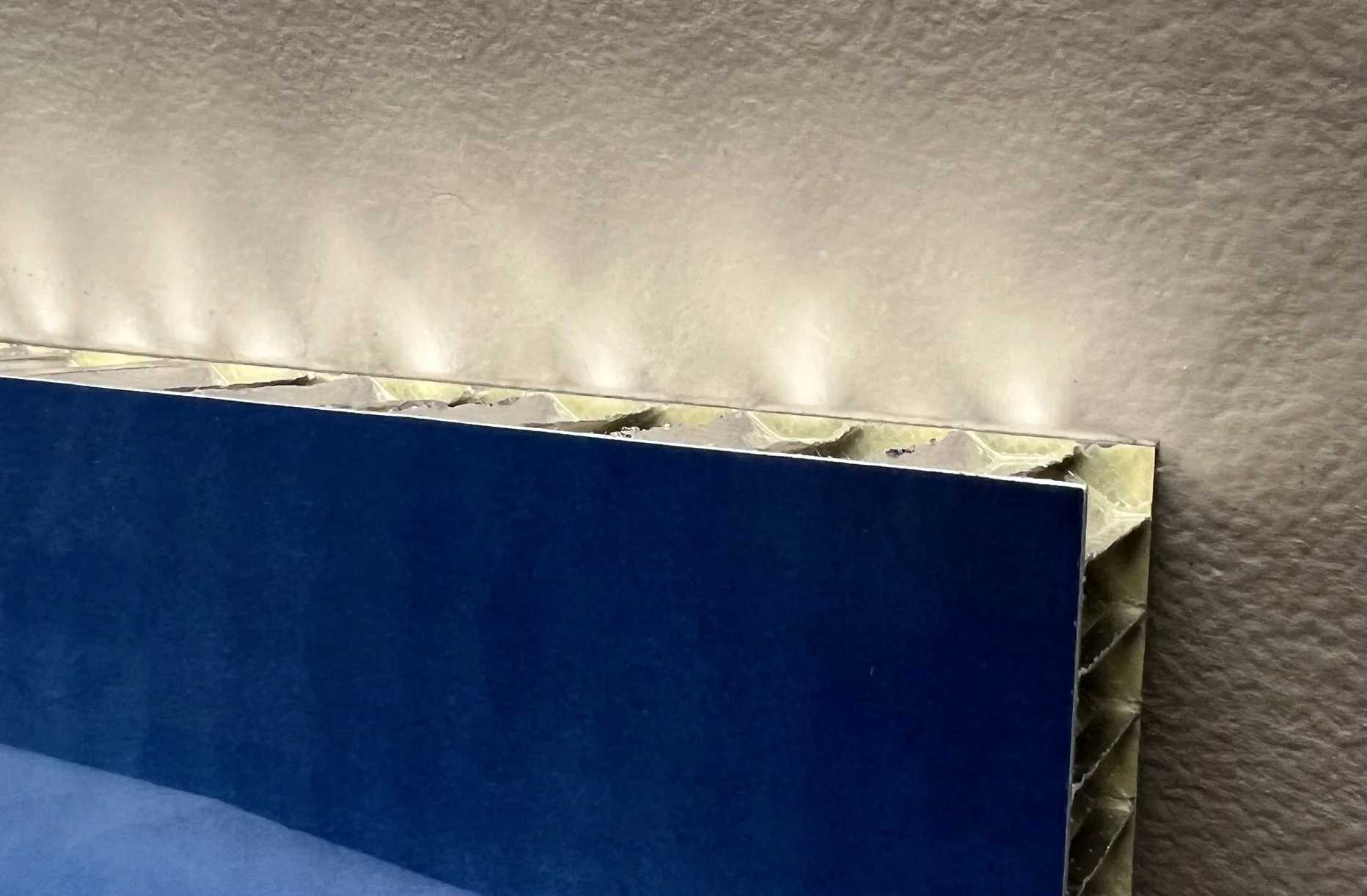The UFO’s cultural status as a nexus of science, fantasy, hope, fear, “the future,” and quasi-religious belief motivated me to research this extremely loaded concept and its imagery.
Initially, I recorded a number of television programs and documentaries on the topic, with a particular interest in the filmed and photographic evidence of alleged UFO sightings. I then viewed these recordings, frame by frame, on an analog television, looking for the “decisive moment” of the UFO’s appearance. Given that the UFO itself typically occupied only a tiny space within the overall picture area, I used a camera outfitted with a macro lens to take an extreme closeup, while retaining as much resolution as possible.
When prints of these photographs were made, I was struck by the way the extreme enlargement of the original picture area took on an evocatively mysterious aura—the result of the phosphorescent glow and prominence of the analog screen’s grid, suggesting the distortions of images seen clandestinely through surveillance cameras and night-vision equipment. At the same time, the images also seemed to radiate a kind of numinous glow, suggestive of a heavenly visitation.
The photos were printed as high-gloss Cibachromes and mounted on panels of TekLam, a honeycomb aluminum that is used in the construction of aircraft. The panels are attached flush to the wall using Velcro strips. As a result of light refection from the diagonal planes of the honeycombed interior of the panels, a small amount of light appears to be emitted from them onto the wall directly above.
The "OZ" in the title of each piece refers to the "Oz Factor," a supposed alteration in consciousness that occurs immediately prior to an alien abduction.
All works 9” x 13” x 1”.








